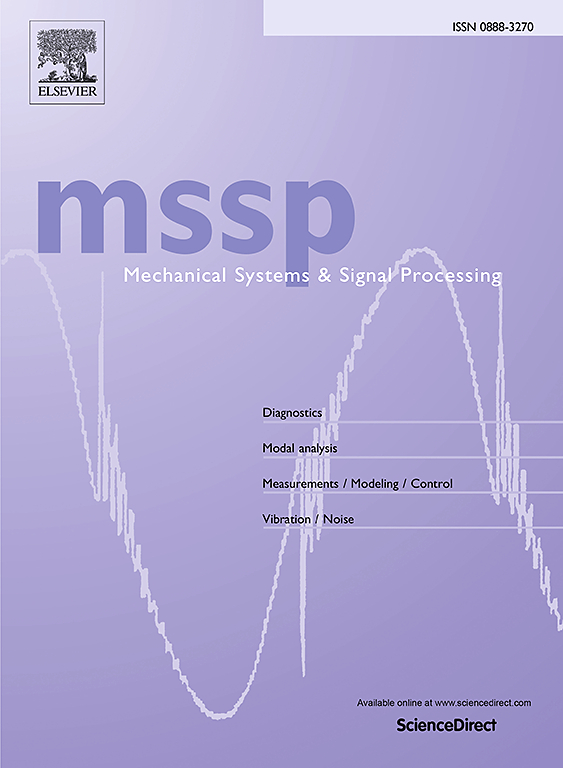Continuous hierarchical symbolic deviation entropy: A more robust entropy and its application to rolling bearing fault diagnosis
IF 7.9
1区 工程技术
Q1 ENGINEERING, MECHANICAL
引用次数: 0
Abstract
The entropy-based method has been proven to be an effective tool for extracting fault features of rolling bearings, but the method still suffers from the defects of being susceptible to the interference of sample length, signal amplitude, and noise, which prevents the fault features from being correctly extracted. To address these issues, a feature extraction method named continuous hierarchical symbolic deviation entropy (CHSDE) is proposed in this paper. Firstly, a new complexity quantization algorithm named Deviation Entropy (DE) is proposed. By measuring the distance of different templates in the phase space through the redefined deviation distance, DE effectively overcomes the interference of signal length and amplitude fluctuation in calculating the entropy value. The simulation experiment verifies that the deviation entropy has a more stable performance compared with other entropies. Secondly, the symbolic time series analysis is introduced and the symbol number adaptive strategy is constructed to determine the optimal number of symbols, which further enhances the noise-resistant performance of DE by extending it to extract features in the symbol domain. Thirdly, to enhance the DE’s ability to characterize features, an improved hierarchical analysis enables the DE to extract features at multiple time scales. Finally, the advantages of the proposed method are verified by two examples. Compared with other entropy methods, the proposed method achieves the highest accuracy.
求助全文
约1分钟内获得全文
求助全文
来源期刊

Mechanical Systems and Signal Processing
工程技术-工程:机械
CiteScore
14.80
自引率
13.10%
发文量
1183
审稿时长
5.4 months
期刊介绍:
Journal Name: Mechanical Systems and Signal Processing (MSSP)
Interdisciplinary Focus:
Mechanical, Aerospace, and Civil Engineering
Purpose:Reporting scientific advancements of the highest quality
Arising from new techniques in sensing, instrumentation, signal processing, modelling, and control of dynamic systems
 求助内容:
求助内容: 应助结果提醒方式:
应助结果提醒方式:


